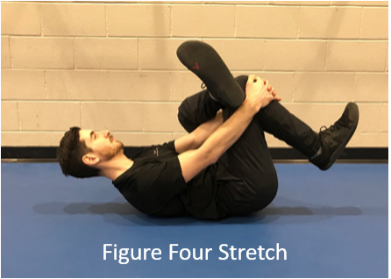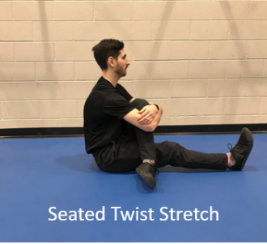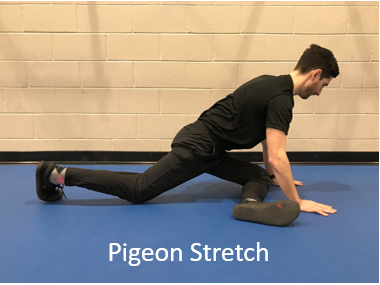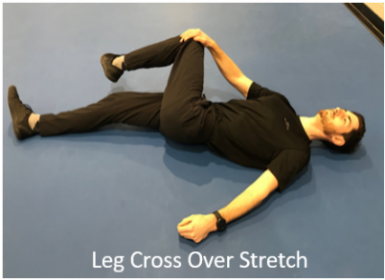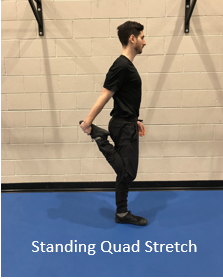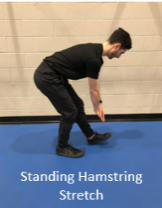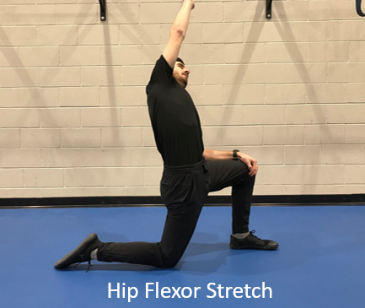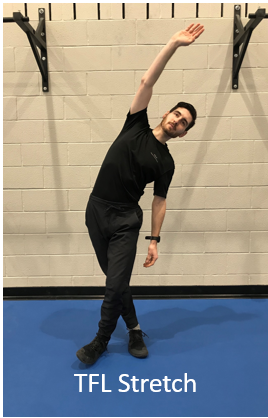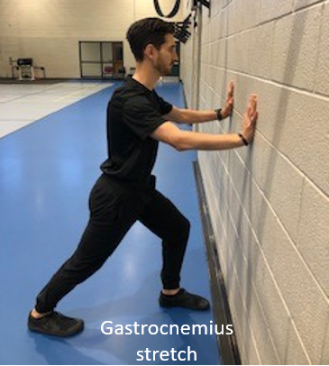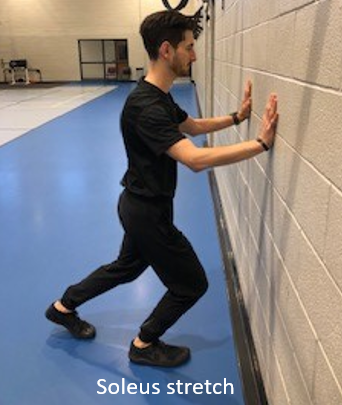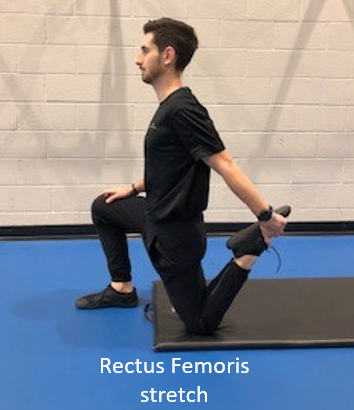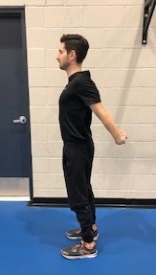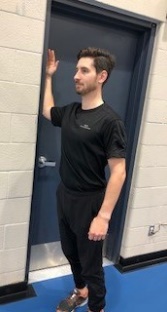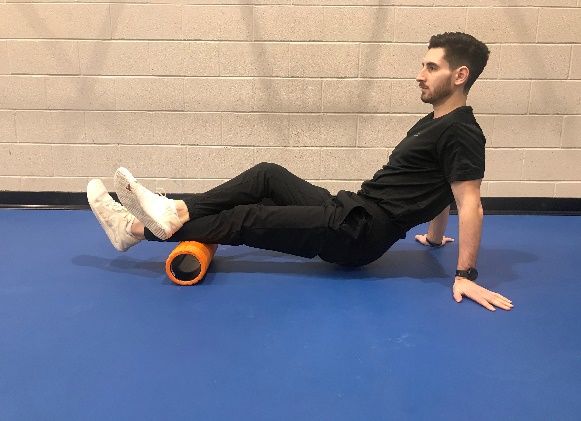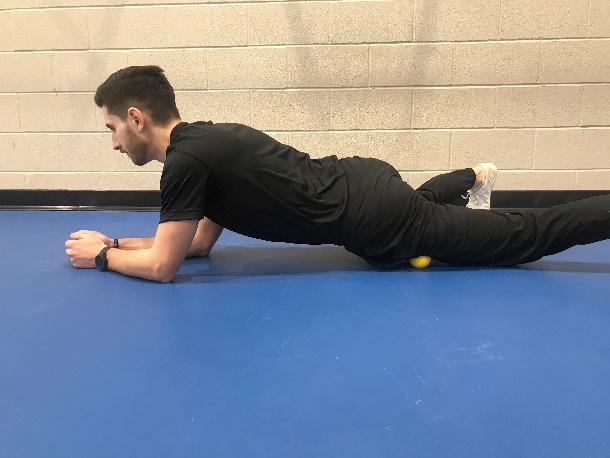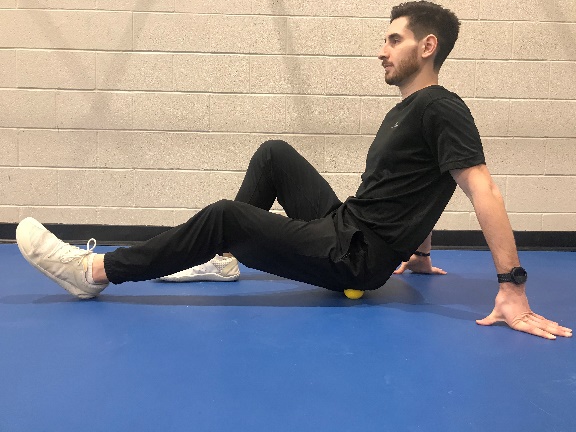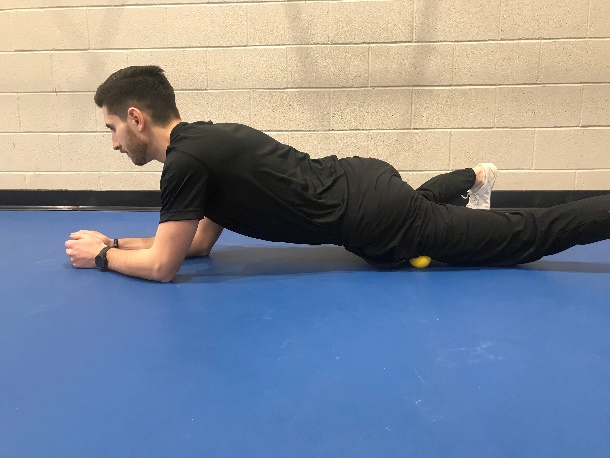PIN Test
Pin Test
Ontario Police Fitness Award
The Ontario Police Fitness Award (OPFA) is a provincial fitness incentive program developed by the Police Fitness Personnel of Ontario (PFPO) and sanctioned by the Ontario Association of Chiefs of Police (OACP). This incentive program was developed as a motivator for Ontario Police Service members to remain physically fit throughout their careers.
The Fitness Pin Test measures muscular endurance, flexibility, and aerobic conditioning. The components include push-ups, sit and reach flexibility test, core endurance, and a choice of maximal (1.5 mile run or 20-metre shuttle run) or submaximal aerobic fitness tests (Modified Canadian Aerobic Fitness Test [mCAFT] or Ebbeling Treadmill Walking Test).
Due to physiological differences, the standards are based on age and gender. The standards are based on extensive research of the fitness levels of Canadians in all age and gender categories. To successfully pass the Fitness Pin Test, a score of 75% or better is required. Successful recipients receive the Ontario Police Fitness Award pin and join many other Police Service members who take the test annually.
Pin Test Components
- Push-ups
Male Push-Up Protocol
- With the hands facing forward and placed under the shoulders, push up from the floor to full arm extension and down until the chin touches the floor. Keep the body straight and pivot from the toes.
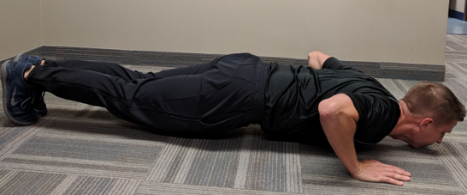
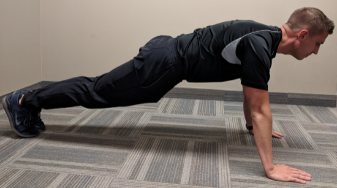
Female Push-Up Protocol
With the hands facing forward and placed under the shoulders, push up from the floor to full extension and down until the chin touches the floor. Keep the body straight and pivot from the knees while keeping the lower leg flat on the floor. Note, thighs should not be touching the floor.
Sit and Reach
- Sit on the ground with your shoes off and feet flat against the flexometer. The insoles of your feet must be 6 inches apart. Exhale and reach as far as you can with one hand on top of the other. This position must be held for 2 seconds. Two attempts are given to all participants and the better of the two scores is recorded.
Core Endurance
- Participants must lay face down on an elevated, firm, stable surface such as a bench. The top of the hips must be marked at the edge of the surface where lower body is in contact with the surface – the upper body is not. Have someone hold your lower body securely by the ankles or have someone sit on the back of your calves (not your hamstrings). Hold your body in a straight line parallel to the ground. The test is timed and is finished when you can no longer maintain the position or you have reached the maximal testing time of 3 minutes.
Maximal Aerobic Test
- Shuttle Run (or)
- 5 Mile Run (2.4 km)
Mobility & Myofascial Release
|
Lie on your back and cross your right ankle overtop of your left knee. Reach your right hand through your legs and grab onto your left knee with both hands. Using both arms, pull your left knee in towards your chest, pausing when you feel a stretch in your glutes. Hold for 20-30 seconds and then repeat with the other leg. |
|
Sit with both legs straightened in front of you. Lift one leg over the other placing the foot on the floor near the opposite hip. Hug and bring your knee towards the opposite shoulder and pause when you feel a stretch in your glutes. Hold for 20-30 seconds and then repeat with the other leg.
|
|
Start in a high plank position with your hands on the ground. Bring your right knee forward towards your right wrist and place the outside of your right shin on the floor; your right ankle should be in front of your left hip. The further forward (i.e. away from the hip) your right heel is, the deeper the stretch you will feel in your glutes. Keep your hips level with the ground. Pause when you feel a stretch in your glutes and hip. Hold for 20-30 seconds and then repeat with the other leg.
|
|
Lay on the floor with your arms spread out against the ground. Grab your left knee with your right hand bring the leg across your body. While keeping the pelvis level on the ground (i.e. prevent rocking), push the knee towards the ground creating a stretch on the outside of the hip. Hold for 20-30 seconds and then repeat on the other side. |
|
Bend one knee and bring the heel back towards the glutes. Grab and pull your ankle towards your body to create a stretch in the hip and thigh. Hold for 20-30 seconds and then repeat with the other leg. |
|
Stand tall and place one leg in front of the other. Bend the back knee slightly and lean forward creating a stretch in the back of the thigh. Be sure to keep your back fairly straight as you want to stretch your hamstring muscles, not your back. Hold for 20-30 seconds and then repeat with the other leg. |
|
Start in a kneeling position. Raise one arm above your head and rotate your torso slightly away from the upright knee. From this position, bend sideways towards the side of the upright knee. This movement should create a stretch in the hip flexor muscle (psoas) from the upper thigh to the side of your waist. Make sure you are pushing your hips forward as you complete this stretch. Hold for 20-30 seconds and then repeat on the other side. |
|
Cross one leg behind the other and raise the arm on the same side of the body above your head. Bend to the side until you feel a stretch in the side of your hips/waist. Hold for 20-30 seconds and then repeat on the other side. |
|
Stand close to a wall with your legs in a staggered position. While straightening the back leg keeping your heel on the ground, you should feel a stretch in the top portion of your calf (gastrocnemius muscle). Ensure the toes of this rear foot are pointed forwards. Hold for 20-30 seconds and then repeat with the other leg.
|
|
Stand close to a wall with your legs in a staggered position (closer stance compared to the gastrocnemius stretch). While keeping the heel of the front foot on the ground, bending the knee forwards will create a stretch in the lower portion of your calf (soleus muscle). Hold for 20-30 seconds and then repeat with the other leg.
|
|
Start in a kneeling position. Grab onto the foot of the rear leg and pull towards the glutes – this should create a stretch in the thigh of the rear leg. Avoid extending your back and/or tilting your pelvis forwards while performing this stretch. Hold for 20-30 seconds and then repeat with the other leg. |
|
Clasp your hand behind your lower back. Gently stretch the chest and shoulders by moving your hands away from your back. Hold for 20-30 seconds.
|
|
Place one palm against a wall while creating a 90-degree angle with the elbow of the same arm. Gently stretch the shoulder by slowly turning the body away from the hand against the wall. Hold for 20-30 seconds and then repeat with the other arm.
|
Active Range of Motion
- Shoulder CARs (controlled articular rotations)
- This exercise can be used to improve shoulder range of motion by creating slow, large circles with the arm.
- Description:
- Start with both hands resting by your side with the palms facing your hips. Slowly raise one arm in front of your body until the hand is above your head, beginning a large backwards circle. While keeping the arm straight, move your hand towards the back wall and slowly turn the palm outwards (thumb pointing down). Continue with the large backwards circle. As you return your hands towards the hip, continue to rotate the hand so the back of your hand is facing your body.
- Slow, large forwards circles can also be completed with the shoulder joint by completing the same movement in the opposite direction.
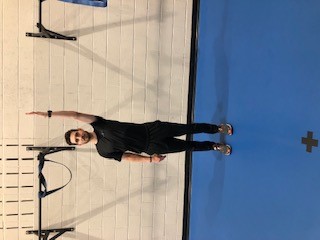
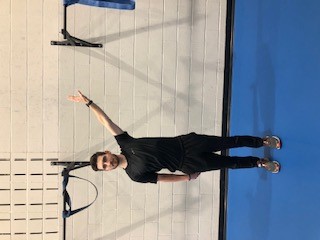
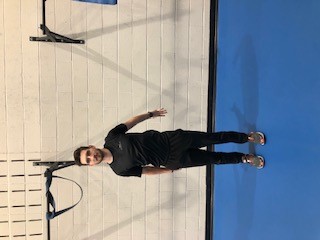
Wall Angels
- This exercise can be used to improve shoulder range of motion by sliding the arms up and down against a flat surface in slow and controlled manner.
- This exercise can be completed while: (A) sitting on the ground with arms against a wall, (B) completing a wall-sit with arms against a wall, or (C) lying with your back and arms flat against the ground.
- Description:
- Start by resting your back and the rear side of your arms against a flat surface, such as a wall. While keeping the arms and back pressed against the wall, raise the arms upwards until the elbows are fully extended. Slowly lower the arms down the wall by bending the elbows while maintaining contact with the wall. Lower the arms until you can no longer keep the arms and back pressed against the wall, then slowly raise the arms until the elbows are fully extended.

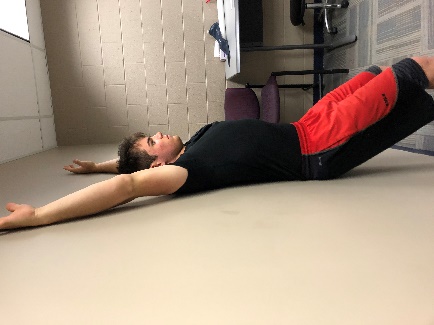
Hip CARs (controlled articular rotations)
- This exercise can be used to improve hip range of motion by creating slow, large circles with the leg.
- Description:
- Start by raising one knee in front of your body until the knee is parallel with the floor. Turn the knee towards the side (away from the midline of the body) while keeping your trunk and hips facing forwards. Rotate the thigh inwards and raise the foot higher into the air. While maintaining this position, bring the foot towards the back wall and slowly move the foot towards the midline of the body, bringing the thigh closer to the body. complete the leg circle by returning the
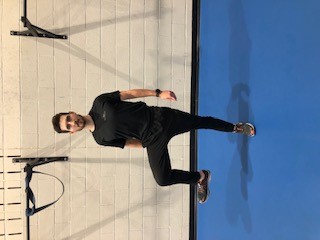
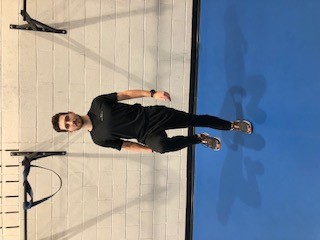
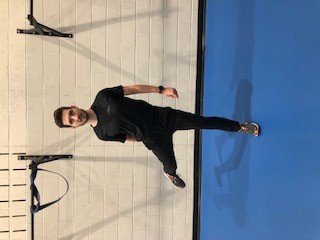
Myofascial Release
Regularly using a roller offers many of the same benefits as a sports massage, including reduced inflammation, scar tissue and joint stress, as well as improved circulation and improved flexibility.
The following routine should be completed after a dynamic warm up. Roll out for 20-30 seconds per side of each muscle group. Apply as much body weight as tolerable to the affected area.
The roller should stay positioned under your muscles at all times – and if you hit a particularly tight or tender spot, lightly roll above and below and then overtop.
Calf
Place the foam roller under your right calf and cross your left foot over. With your palms on the ground lift yourself up, so your body weight is on the foam roller. Switch legs. |
|
Hip Flexor
Lay on your stomach with the ball in your right hip joint. Brace yourself with your forearms. Roll along the femur. Switch legs. |
|
IT Band
Lay on your right side with the foam roller perpendicular to your hip. Cross your left leg over your right and keep your right leg flat on the floor. Support your upper body with your elbow and roll along the leg from your hip to knee. Switch legs. |
|
Glute
Sit on the ball so it is under your right glute and your right leg is straight. With your left leg bent, apply force to the ground so you elevate your left hip off the ground. Brace yourself with your palms on the ground. Roll out along the entire glute muscle. Switch sides. |
|
Hip Flexor
Lay on your stomach with the ball in your right hip joint. Brace yourself with your forearms. Roll along the femur. Switch legs. |
|
Quadriceps Lying on stomach, place the foam roller under your quad and use your arms to support your body weight. Apply as much body weight directly into the foam roller as tolerable. Switch legs. |
|
*All exercises can be performed with a foam roller or lacrosse ball*
External Resources
Canadian Society for Exercise Physiology (CSEP)
ParticipACTION
https://www.participaction.com/en-ca
Back Pain – Prevention and Rehabilitation Resources
Strength Training – Biomechanics, Mobility & Rehabilitation
https://squatuniversity.com/featured-links/blog/
Variety Village – Adaptive Physical Activity for Children
https://www.varietyvillage.ca/
City of Brampton – Fitness
https://www.brampton.ca/EN/residents/Recreation/Programs-Activities/Pages/Fitness.aspx
City of Mississauga – Recreation and Sports
https://www.mississauga.ca/recreation-and-sports/
Town of Caledon – Recreation and Leisure
https://www.caledon.ca/en/living-here/recreation--leisure.aspx
City of Toronto – Recreation
https://www.toronto.ca/explore-enjoy/recreation/
Halton Hills – Recreation
https://www.haltonhills.ca/en/explore-and-play/recreation.aspx
